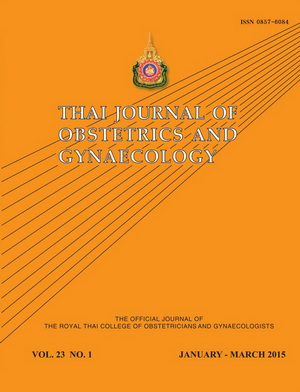Comparison Respiratory Distress Syndrome (RDS) Rate in Late Pre-term Infants between Gestational Age 34 Weeks and 35-36 Weeks
Main Article Content
Abstract
Objective: The main objective of this study is to compare the occurring rates of respiratory distress syndrome (RDS) in late preterm infants at gestational age of 34 weeks and 35-36 weeks. The second objective is compare the rates of short term neonatal complications among infants at gestational age of 34, 35-36 weeks and term (37-40 weeks)
Materials and Methods: This is a retrospective cohort design. 200 late preterm (99 cases for GA 34 weeks and 101 cases for GA of 35-36 weeks) and 100 normal term neonates were recruited. RDS rate and short-term complications in neonates who were born at the Bhumibol Adulyadej Hospital from January 2011 to June 2014 were compared. The data were analyzed with Chi-square test, Student’s t-test and analysis of variance where appropriate.
Results: RDS rate was found higher in the late preterm group with GA 34-346/7 weeks than in the group with GA 35-366/7 weeks (15% and 4.0% respectively with P = .015). The RDS rate of normal term (GA 37-40 weeks) was zero. The short-term complications: oxygen requirement, hyperbilirubinemia, hypoglycemia, hypothermia, NICU admission and hospital stay were also higher in 34-346/7 week gestation group.
Conclusion: The rate of RDS is significantly higher in late preterm with GA 34-346/7 weeks than others group.


